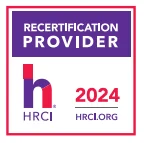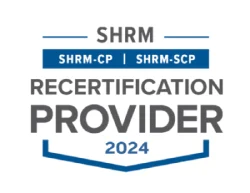IRS Releases Education Assistance FAQs

The IRS recently released a Fact Sheet to address frequently asked questions related to educational assistance programs offered under IRC Section 127. Programs offered under this section allow employees to receive a tax-exempt benefit while providing employers with a tax deduction. The IRS noted that this Fact Sheet should not be viewed as binding law, nor will it be used to resolve a case, rather the goal is to provide employers with additional information should they already have an educational assistance program in place or if they are considering implementing one in the future. Specifically, the Fact Sheet provides, among other responses, the definition for an educational assistance program, an explanation of what benefits are considered educational assistance, and whether there are other exclusions from gross income for educational assistance.
Fact Sheet Highlights:
- Writing Requirement: Educational Assistance Programs must be in writing and structured in a way that satisfies the requirements outlined by the IRS. The Fact Sheet provides a sample plan for employers to utilize when setting up their program.
- Nondiscrimination Testing: Educational Assistance Programs are subject to annual nondiscrimination testing rules under IRC Section 127. For the program to satisfy the requirements under this Section, the employer must ensure the program does not discriminate in favor of highly compensated employees, self-employed individuals, officers, or shareholders.
- Benefit Limit: The total amount an employee can exclude from their gross income is $5,250 per calendar year. This maximum is the combined total of payments of principal and interest on a qualified education loan and other educational assistance. Expenses must be paid by the employee in the same calendar year for which reimbursement is sought from the employer.
- Student Loan Benefits: Employers may provide payments of principal and interest on an employee’s qualified education loans for payments made after March 27, 2020, and before January 1, 2026. Payments can be made to a third party or the employee directly. It is currently unclear whether student loan benefits will be extended beyond January 1, 2026.
Employer Next Steps:
- Confirm Educational Assistance Program is in writing and being properly administered.
- Conduct annual nondiscrimination testing for the program.
- Consider amending the policies to include student loan repayment.
- Determine whether implementing an Educational Assistance Program aligns with your organization’s goals and discuss next steps with your tax advisor.
For additional information or to discuss options for an Educational Assistance Program, please reach out to your Innovative Account Team.
The IRS recently released a Fact Sheet to address frequently asked questions related to educational assistance programs offered under IRC Section 127. Programs offered under this section allow employees to receive a tax-exempt benefit while providing employers with a tax deduction. The IRS noted that this Fact Sheet should not be viewed as binding law, nor will it be used to resolve a case, rather the goal is to provide employers with additional information should they already have an educational assistance program in place or if they are considering implementing one in the future. Specifically, the Fact Sheet provides, among other responses, the definition for an educational assistance program, an explanation of what benefits are considered educational assistance, and whether there are other exclusions from gross income for educational assistance.
Fact Sheet Highlights:
- Writing Requirement: Educational Assistance Programs must be in writing and structured in a way that satisfies the requirements outlined by the IRS. The Fact Sheet provides a sample plan for employers to utilize when setting up their program.
- Nondiscrimination Testing: Educational Assistance Programs are subject to annual nondiscrimination testing rules under IRC Section 127. For the program to satisfy the requirements under this Section, the employer must ensure the program does not discriminate in favor of highly compensated employees, self-employed individuals, officers, or shareholders.
- Benefit Limit: The total amount an employee can exclude from their gross income is $5,250 per calendar year. This maximum is the combined total of payments of principal and interest on a qualified education loan and other educational assistance. Expenses must be paid by the employee in the same calendar year for which reimbursement is sought from the employer.
- Student Loan Benefits: Employers may provide payments of principal and interest on an employee’s qualified education loans for payments made after March 27, 2020, and before January 1, 2026. Payments can be made to a third party or the employee directly. It is currently unclear whether student loan benefits will be extended beyond January 1, 2026.
Employer Next Steps:
- Confirm Educational Assistance Program is in writing and being properly administered.
- Conduct annual nondiscrimination testing for the program.
- Consider amending the policies to include student loan repayment.
- Determine whether implementing an Educational Assistance Program aligns with your organization’s goals and discuss next steps with your tax advisor.
For additional information or to discuss options for an Educational Assistance Program, please reach out to your Innovative Account Team.
Categories
Archive







